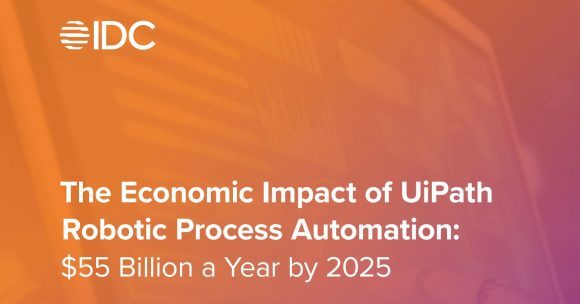UiPath IDC analysis: RPA is only 7% done, growth beckons
UiPath wrapped up its Forward IV (yes, the next one is called Forward V) user, customer and partner technology conference in Las Vegas this week with the flesh-pressing that comes with the customary show awards ceremony.
The challenge for UiPath this year is a) not everyone wants to shake hands (that’s okay, elbow bumps are fine) and also b) the company now has some 4,700 technology partners.
Despite that lofty number, only around 100 or so partners appear alongside UiPath at the conference itself, so naturally these are probably the ones more likely to be recognised for their work.
The UiPath 2021 Partner Award winners include EY (that’s Ernst & Young, just in case you’d forgotten) as global partner of the year.
Also getting its hands on some fancy bent and etched glass this year was Cognizant as global growth partner of the year.
“Cognizant is recognised as a leader in evangelising UiPath growth products. It has been a pioneer in shifting to intelligent automation by using UiPath’s platform and products such as Process Mining, Task Mining, Document Understanding & AI Center and Testing Suite with a focus on solutions and capabilities for scaling client’s automation programs,” noted Eddie O’Brien, global channel chief at UiPath and team, in a press statement.
As a follow up to its partner news, UiPath also made note of new research from IDC that examines the contributions of UiPath robotic process automation (RPA) to the global economy.
IDC: RPA now is 7%
The UiPath-commissioned IDC white paper, “The Economic Impact of UiPath Robotic Process Automation”, states that “the economic benefits expected by the use of RPA software by UiPath customers will grow at a blistering pace, from $7 billion worldwide in 2021 to $55 billion in 2025.”
“Only 7% of digitally enabled task workers have been impacted by the use of RPA. At this study’s projected rate of adoption, task workers impacted will grow at a compound annual growth rate of 70% from 2020-2025, accounting for 10% of task workers impacted. RPA is not even to the ‘knee of the curve’ of adoption,” said report co-author Maureen Fleming, IDC’s program vice president of intelligent process automation research.
Fleming says that RPA is touching millions of dollars/pounds of global business revenue, creating thousands of jobs, while also opening billions in opportunities to ecosystem partners.
As with any new technology, automation can cause fear in an organisation. Will software robots take jobs? Will automation increase unemployment? What does the future hold? While RPA automates manual work, economic growth driven by emerging markets creates new jobs.
IDC estimates that two jobs are gained for every job lost to RPA, and based on how RPA advances, the ratio could change over time to four jobs gained for every job lost.
We can also see that as companies continue to prioritise digital transformation efforts, they are increasingly upskilling their employees on RPA to unlock the productivity afforded by automation.
“Automation unlocks workers’ productivity, and, more importantly, frees them to focus on meaningful work that is creative, collaborative, and strategic,” said Tom Clancy, UiPath senior vice president of learning. “Like previous new technologies, RPA and AI will create new job opportunities. They already are. And that’s why it’s critical that companies provide training for and access to automation and other digital technologies to create more fulfilled and energised employees.”
The IDC Thought Leadership White Paper, The Economic Impact of UiPath Robotic Process Automation can be downloaded here.




